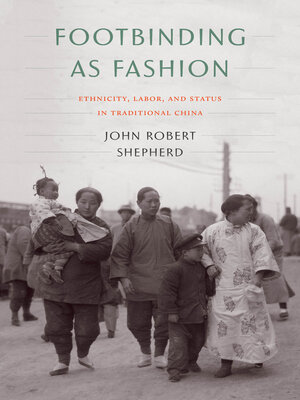Footbinding as Fashion
ebook ∣ Ethnicity, Labor, and Status in Traditional China
By John Robert Shepherd

Sign up to save your library
With an OverDrive account, you can save your favorite libraries for at-a-glance information about availability. Find out more about OverDrive accounts.
Find this title in Libby, the library reading app by OverDrive.



Search for a digital library with this title
Title found at these libraries:
| Library Name | Distance |
|---|---|
| Loading... |
Previous studies of the practice of footbinding in imperial China have theorized that it expressed ethnic identity or that it served an economic function. By analyzing the popularity of footbinding in different places and times, Footbinding as Fashion investigates the claim that early Qing (1644–1911) attempts by Manchu rulers to ban footbinding made it a symbol of anti-Manchu sentiment and Han identity and led to the spread of the practice throughout all levels of society. Detailed case studies of Taiwan, Hebei, and Liaoning provinces exploit rich bodies of previously neglected ethnographic reports, economic surveys, and rare censuses of footbinding to challenge the significance of sedentary female labor and ethnic rivalries as factors leading to the hegemony of the footbinding fashion. The study concludes that, independently of identity politics and economic factors, variations in local status hierarchies and elite culture coupled with status competition and fear of ridicule for not binding girls' feet best explain how a culturally arbitrary fashion such as footbinding could attain hegemonic status.







